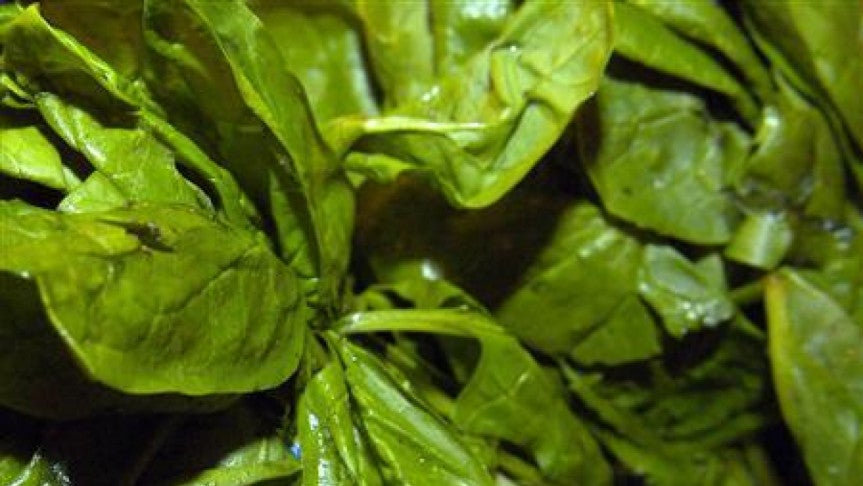Safe-to-eat spinach on your way

New York: Scientists have reported a new, easy-to-implement method to disinfect green leafy vegetables like spinach to reduce outbreaks of illness.
Leafy vegetables are washed by commercial processes before they head to the grocery store.
‘But these methods, which can include water and bleach rinses or irradiation, are not completely effective,’ says Nichola Kinsinger from University of California-Riverside.
Scientists have estimated that 99 percent of food-borne illnesses from leafy greens can be traced back to disinfection issues.
As a result, the team has developed a different approach to attacking the bacteria, most notably E. coli, which is the cause of many outbreaks.
Using a parallel-plate flow chamber system that Walker developed, the researchers tested the real-time attachment and detachment of bacteria to the outer layer of spinach leaves.
At low-bleach concentrations, the bacteria fell off the leaves but remained alive.
At the higher concentrations used commercially, however, all of the bacteria were killed.
‘We found that because of the topology of the spinach leaf, nearly 15 percent of the surface may 'see' a bleach concentration that is 1,000-times less than that of the rinse solution,’ Kinsinger noted.
In some cases, that translated to a 90 percent bacterial survival in their tests -- and a high risk for cross contamination.
To reduce that risk, the researchers are optimising an inexpensive titanium dioxide (TiO2) photocatalyst that companies could add to the rinse water or use to coat equipment surfaces that come into contact with the leaves as they are processed.
When TiO2 absorbs light, it produces a strong oxidant that kills bacteria completely.
The team presented their work at the national meeting and exposition of the American Chemical Society (ACS) in Boston this week.

 IANS
IANS




